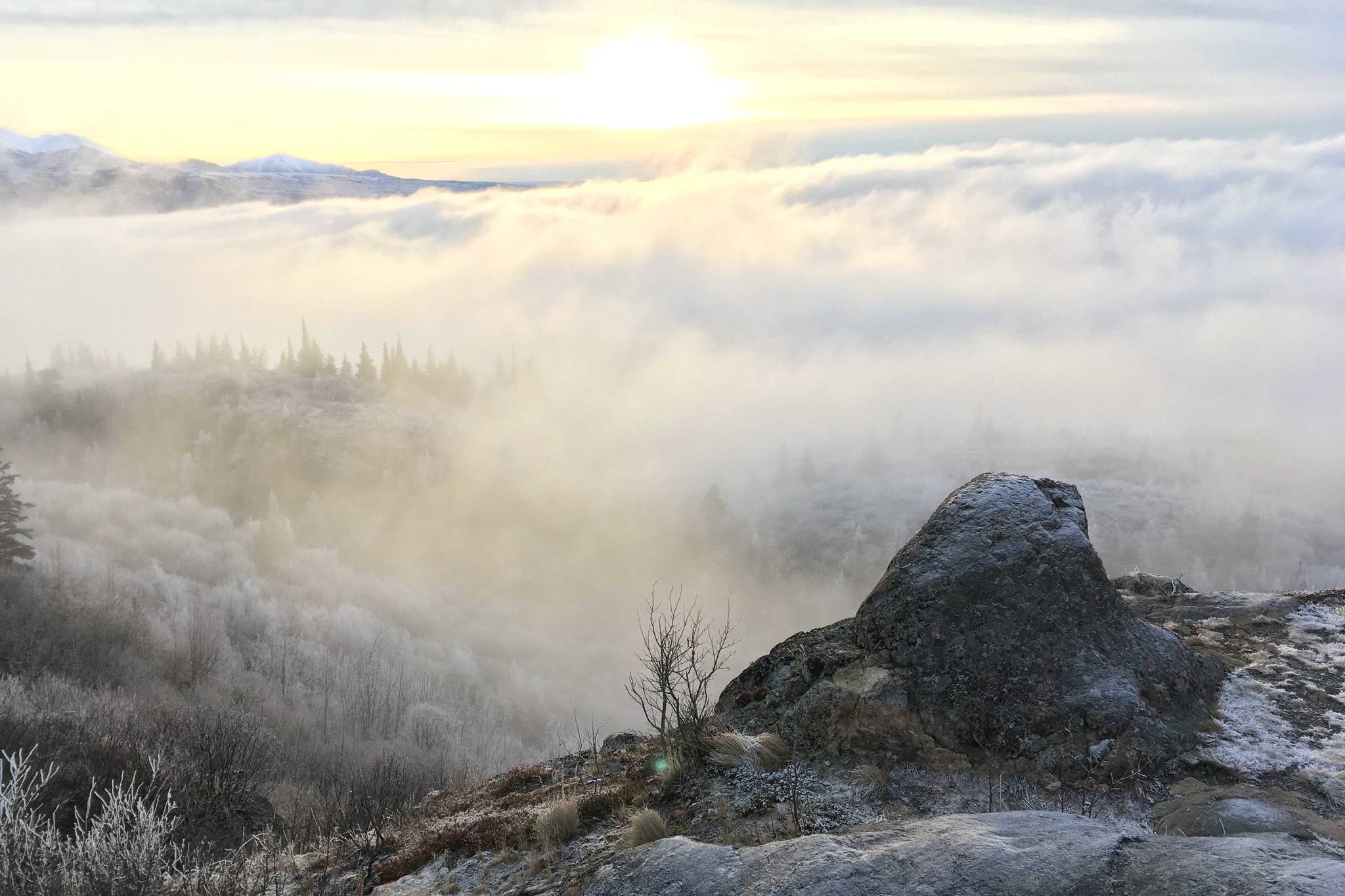First, a few confessions.
On Nov. 10, 2018, I marked the first snowfall of the season by getting off work and immediately bolting to the Kenai Golf Course, arriving about midnight.
In blizzard conditions, the cascading powder was so sticky my classic skis were putting a large clump of snow underfoot with each step. Instead of giving up, I went home and got less-packy skate skis, finishing up after 2 a.m.
Six days later, as warm temperatures brought green back to the central Kenai Peninsula, I found two patches of snow at the golf course — one from tee box to fairway at the sixth, another from fairway to green at the fifth.
Each featured a slight hill, and in a practice of getting up and down that would have made the most avid golfer proud, I skied back and forth on No. 6 28 times and on No. 5 11 times to total 8.7 miles in just over an hour.
While these confessions reveal many — too many — things about myself, for the purposes of this column, they are meant to show how much I love skiing.
And now a revelation.
The rain and above-freezing temperatures we had early this winter, keeping good skiing from arriving until mid-December, did not make me sad, agitated or stir crazy.
Avid skier after avid skier would seek me out, looking for someone to commiserate with as their affect spiraled downward.
I couldn’t. Just didn’t have it. It was kinda like when your brother in college gets a girlfriend and won’t talk Packers anymore, even though they are on a Super Bowl run.
In the past, ice skating and pre-winter hiking had been opening acts Danzig and Suicidal Tendencies at a Metallica concert — cool in their own way, but not that for which you came.
This winter, for the first time, I found my self grooving out to “Mother” and “Gotta Kill Captain Stupid,” with no anxiety to just get on to “Master of Puppets.”
This new me was odd, but I didn’t prod for fear it was a deep facade. Why use energy to turn contentment to misery?
Then I listened to “Kenai Conversation” on public radio station KDLL. The guest Nov. 14 was Alan Boraas, professor of anthropology at Kenai Peninsula College.
I had taken Boraas’ class on the anthropology of the Kenai Peninsula shortly after arriving here in 1997, and had avidly read his columns in publications like the Redoubt Reporter since then.
Boraas and able host Shaylon Cochran were talking about the Culture of the North when, about 29 minutes into the show, I had the explanation for the new me.
In periods of unpredictability like November, Boraas talked about going out each day with skis, ice skates, snowshoes and spiked running or hiking shoes.
Nature gets to dictate what you do, you don’t get to dictate to nature.
“What does the day bring you?” he said. “It’s not about planning your own activities, it’s about adapting to the day. Because you can do one of those activities every day, even if it’s just walking.”
Boraas said getting out each day and moving on the landscape for an hour or so is critical.
“It’s recreation, but it’s really more than recreation,” he said. “It is critical to health and survival and mental health in the North. And it’s not hard.”
There it was. Mix in my knowledge of neuroscience and I had the answer to the new me.
The brain, neuroscientists have found, does not passively take in stimulus. As followers of our politics have no doubt divined, what we perceive is strongly influenced by our beliefs and assumptions.
Take optical illusions. Our brain has beliefs and assumptions about line, shape and shadow, so even when we know that, for instance, two lines with opposite-facing arrowheads are the same length, we look at them and just can’t make it so.
Optical illusions are one thing, emotions are another. What so fascinated me was that, after all these years, by making this aspect of the Culture of the North part of my deepest beliefs, a time that I had perceived with sorrow and unrest changed to one of contentment and happiness.
This got me thinking about another of Boraas’ refrains throughout the years — that we must be careful about the language we use when talking about cold and darkness, because consistently talking of cold and darkness as evil will affect our happiness as people of the North.
As one who has spilled a lot of words over the last 20-plus years, I’d struggled with this. My job is to accurately reflect what people say, and people commonly complain about the cold and dark.
That will continue to be my job, but upon reflection I’ve resolved not to become a part of the problem.
At the Ski for Women last year, I wrote that skiers had “braved” subzero temperatures.
But was it really brave for everybody to throw on appropriate clothes, get together with friends and count the ways everything is more crisp when it’s that cold — the snap of a start and finish flag, the groom of the trail, the feeling of air in the nostrils?
I’ve got another confession to make.
The answer is no.
Reach Jeff Helminiak at jhelminiak@peninsulaclarion.com.


